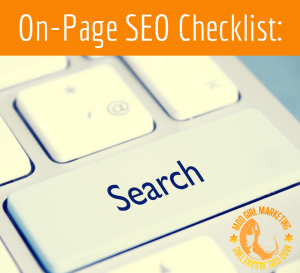
SEO, or search engine optimization, is one of the key aspects of making your website easy for users to find. While you may not be able to control how many people share your website or make a purchase on your page, you can optimize your site to increase the amount of traffic it receives. Here’s a quick checklist of thing things that a perfectly optimized page needs—
Great Content
It probably goes without saying, but if your content isn’t great, then it’s not going to be SEO-friendly. Quality content should answers users’ questions, provide relevant information for your audience, be original and engaging, link to different sources both within your website and on others’, and be well-written and utilize traditional grammatical conventions and spelling.
Headings and Subheadings
Headings and subheadings not only make your content look nicer and make it more SEO friendly by incorporating relevant information and keywords, but they also make the content easier for your audience to read. Use consistent fonts and font sizes for your headings and subheadings, and try to keep them around 60 to 100 characters.
Photos, Videos, and Graphics
One of the things that search engines and readers really love are great photos, videos, and graphics. When choosing multimedia, make sure it fits your blog’s or website’s purpose, is attractive, offers something original, and is high quality – meaning that the resolution and size are both optimized. Additionally, add title descriptions that utilize keywords for true optimization.
Meta Descriptions
Meta descriptions are the short blurbs of text that are found directly under the website link on a search engine’s search results page. Meta descriptions provide a snippet of what the website’s about, and allow the user to gather some information before even visiting the site. As such, a meta description should be as engaging as possible, and should also use keywords to ensure that a search engine can pick it up.
While SEO is certainly a science that requires some thought and planning, good SEO strategy isn’t impossible. By creating content that’s relevant and engaging, using optimized subheadings and headings, incorporating high quality multimedia, and making sure your meta descriptions are on point, you’ll be well on your way to creating a perfectly optimized page.